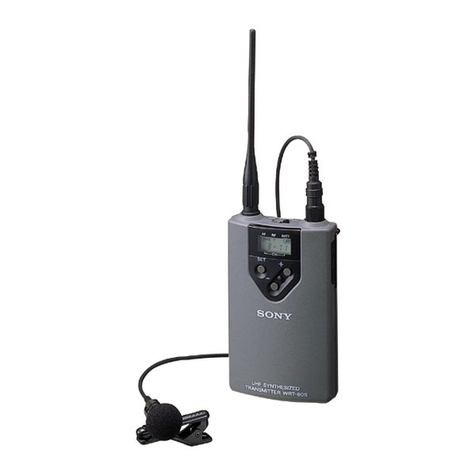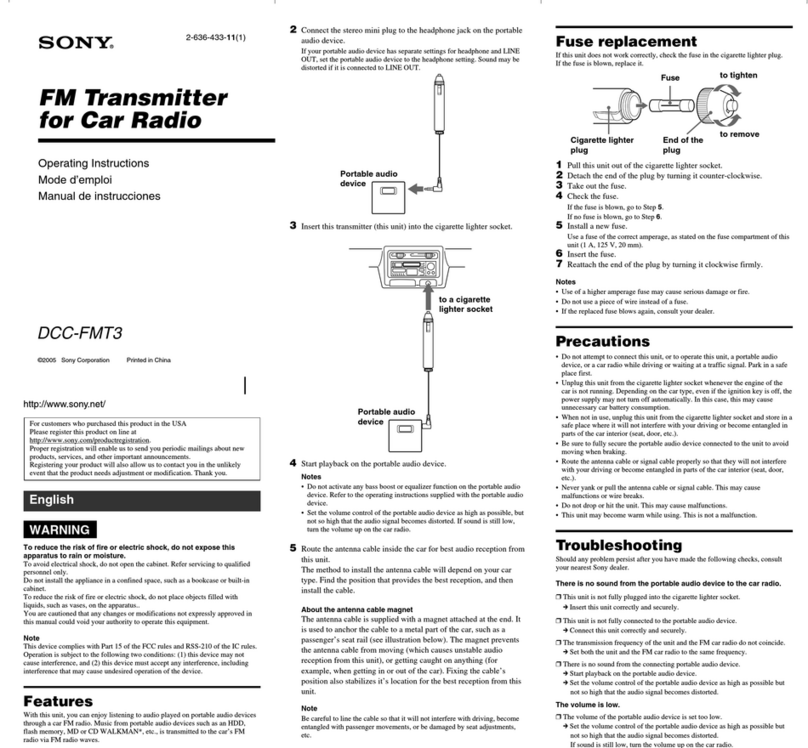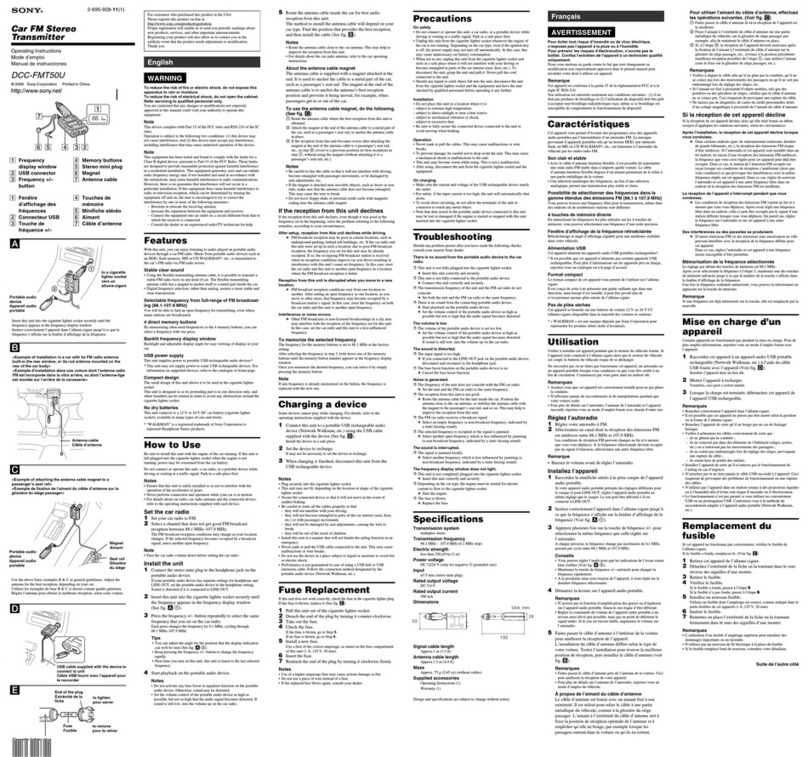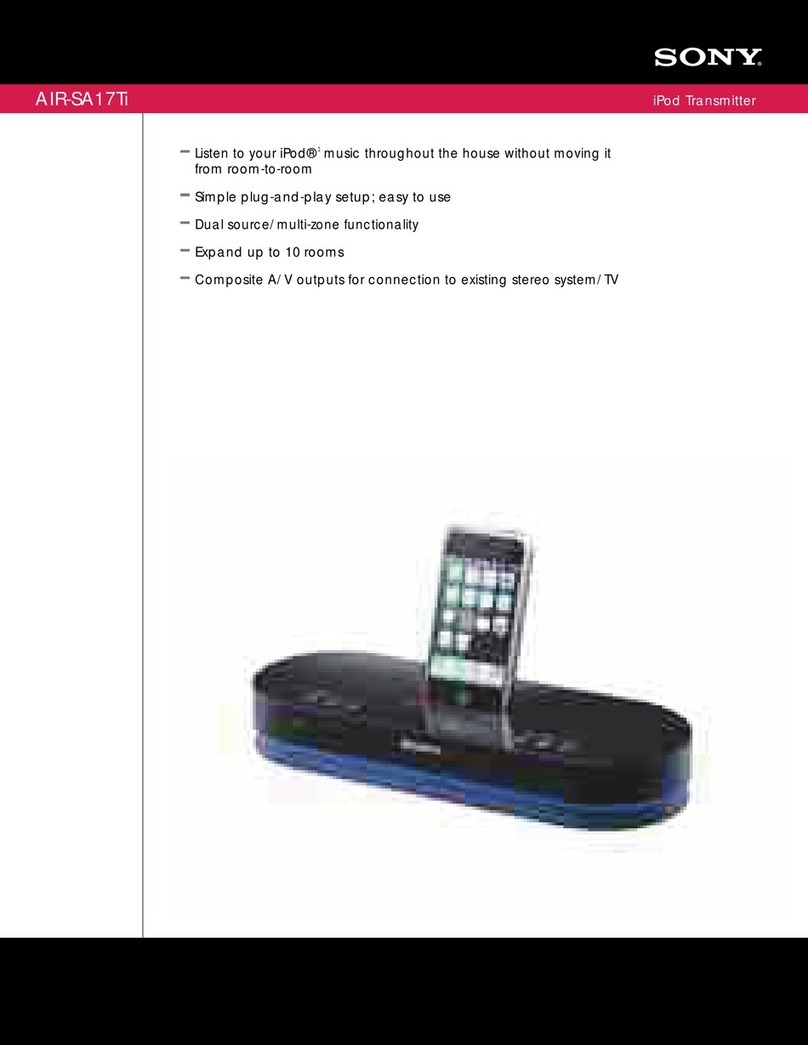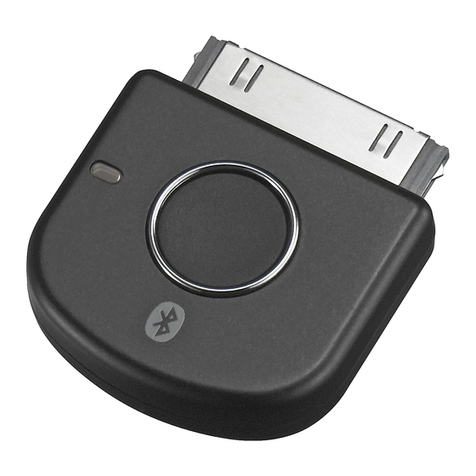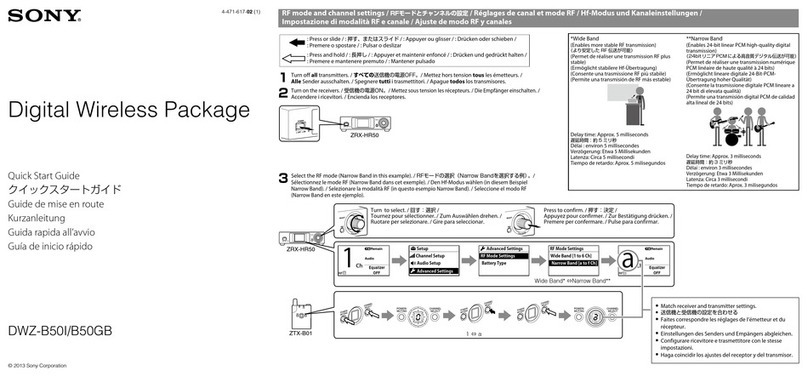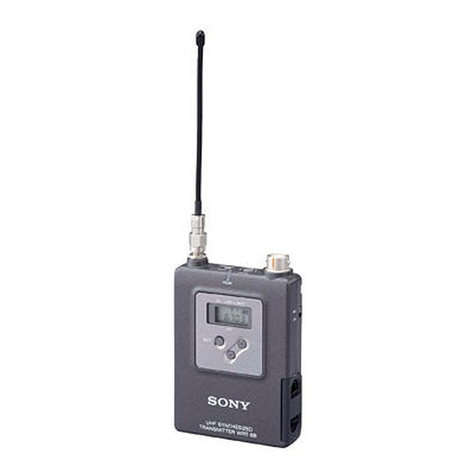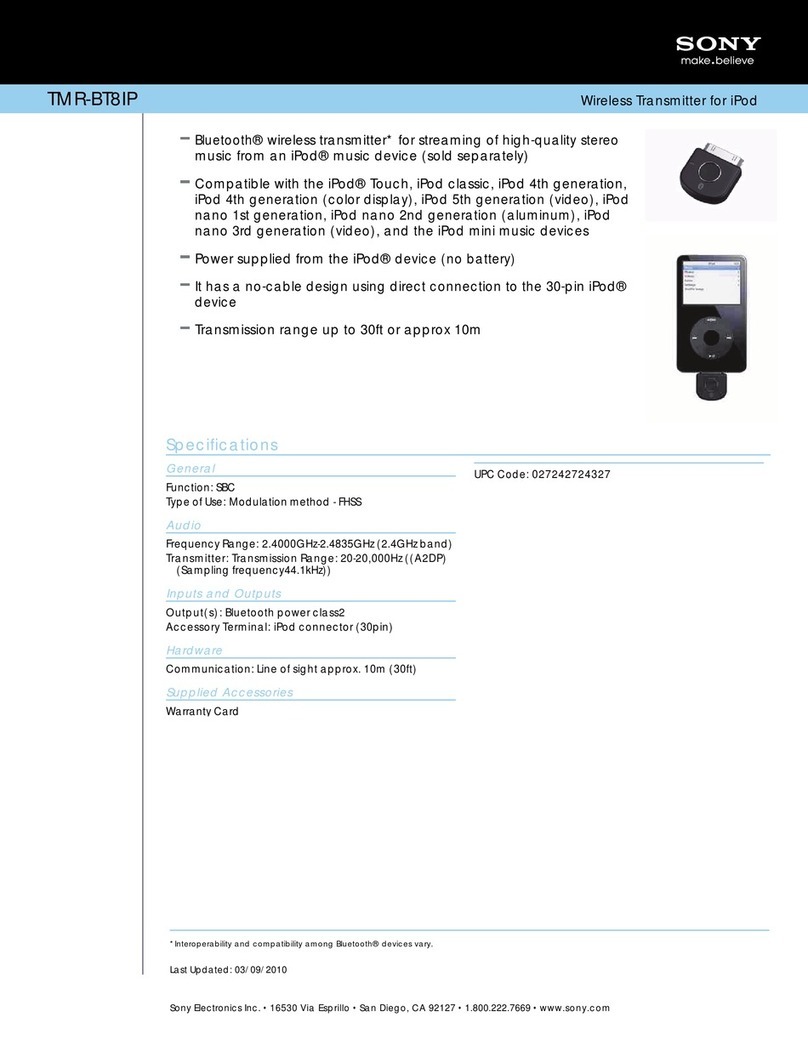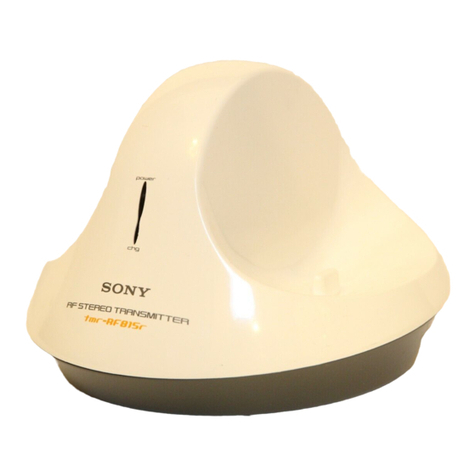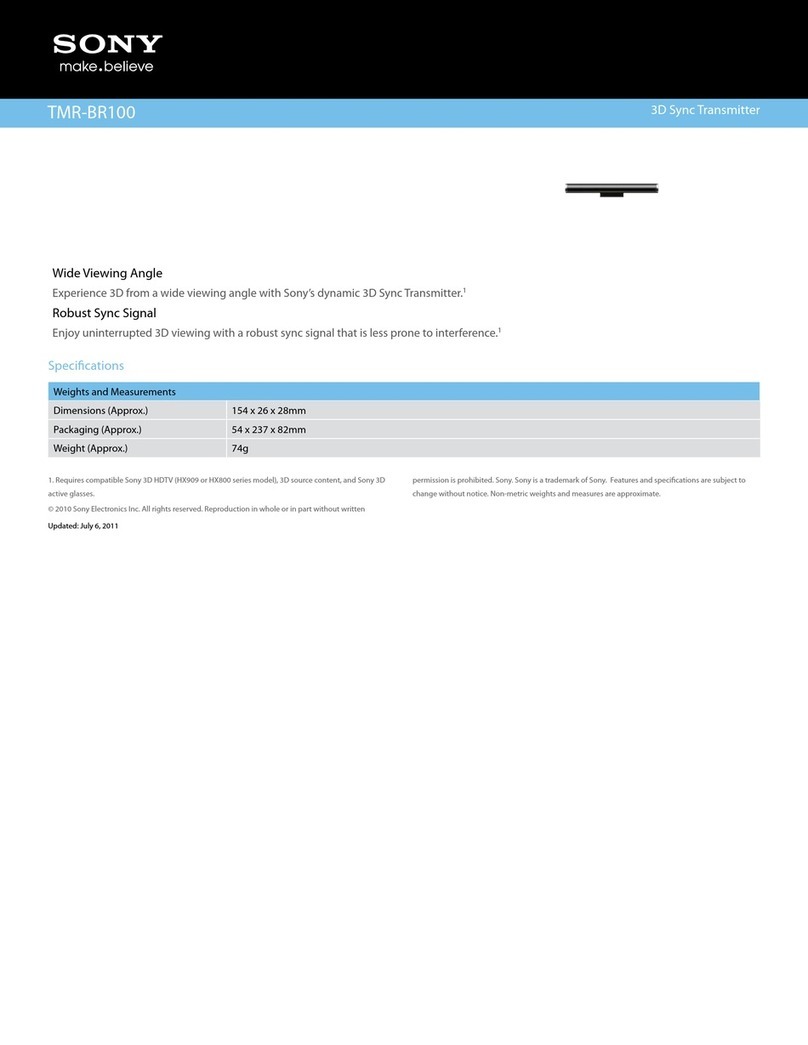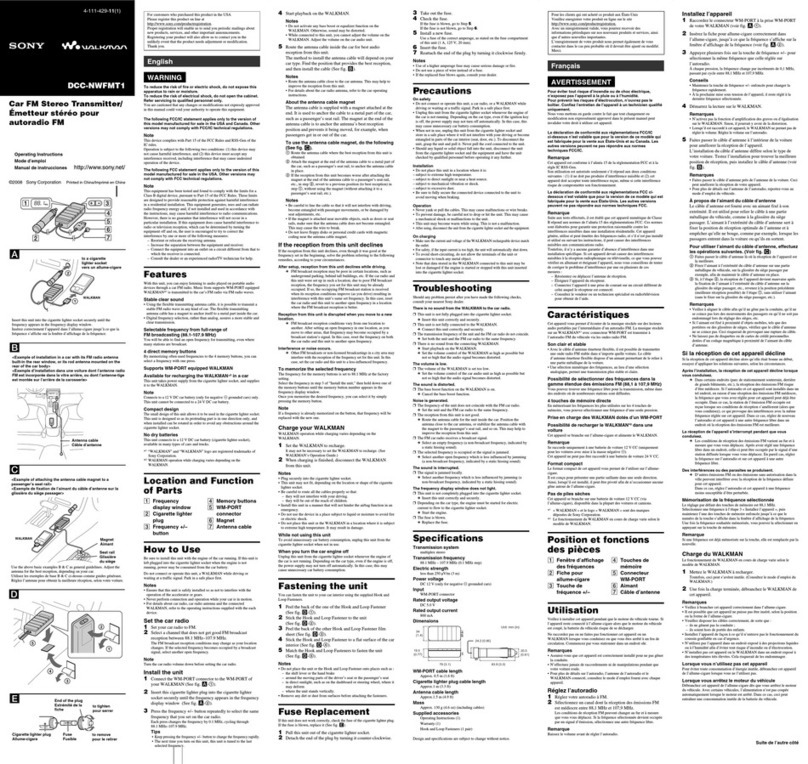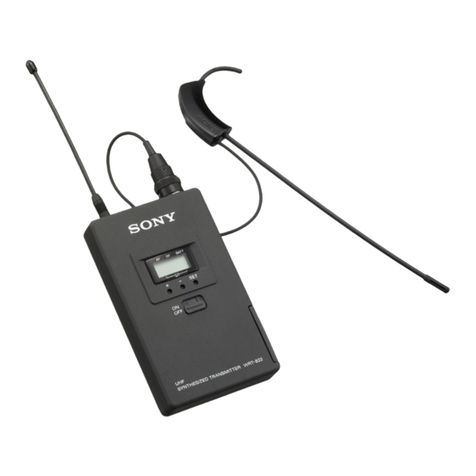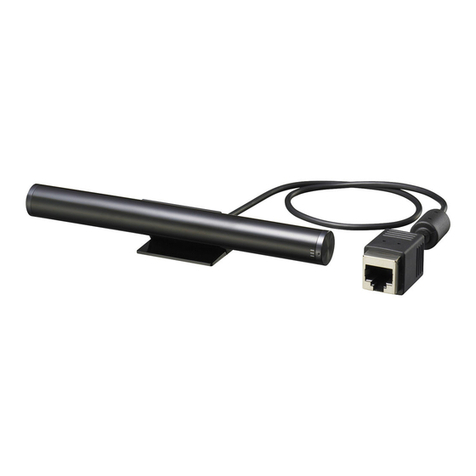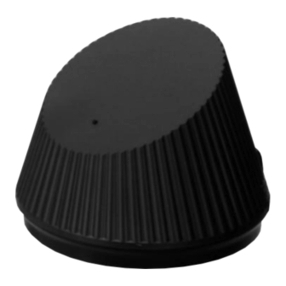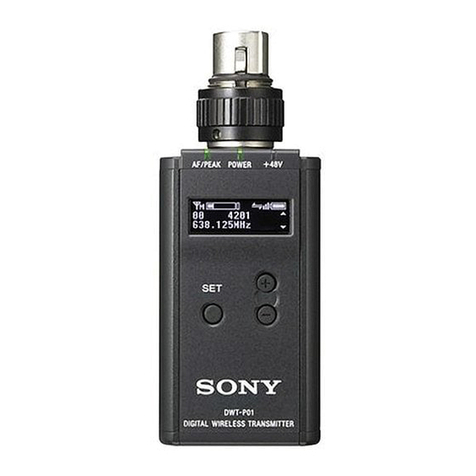
8
goes up, RF REMOTE turns on, and the remote
control function becomes operative.
To use the Cross Remote with a previous
pairing
In the RF REMOTE indication, select ON.
• When you set RF REMOTE to ON, the transmitter will
communicate with the receiver to which it was
previously paired. To use the wireless remote control
function with another receiver, you must perform the
pairing procedure for that receiver.
• Multiple transmitters cannot be paired with the same
receiver.
• If you reset all parameters by using the FACTORY
PRESET function (see page 14), the pairing setting of
the transmitter is also cleared.
The following transmitter settings can be done
from the remote control:
• Transmitter name setting
• Frequency band/group/channel selection
• RF transmission power setting
• MIC/LINE setting and attenuator setting for audio input
level
• Low-cut filter setting
• Power save setting
• Resetting accumulated use time
• Audio codec mode setting
• Internal signal setting
• POWER switch lock setting
For details on menu operation, see “Setting Menus”
(page 10).
To perform remote control, the receiver must be equipped
with a control function for the setting you want to control.
For details, refer to the operating instructions supplied
with the receiver.
To cancel the Cross Remote
In the RF REMOTE indication, select OFF.
Notes on the Cross Remote
The wireless remote control function on the transmitter
uses the 2.4-GHz band and may thus be subject to
interference from other devices.
• When pairing fails (“Pairing fail” is displayed),
successful communication between the transmitter and
the receiver has not occurred within a given amount of
time. Pairing may be harder to do when another receiver
is engaged in pairing nearby.
• When it becomes hard to use the remote control, the
remote control may be improved by switching the
wireless remote control function off, then on again in the
RF REMOTE display, then re-pairing with the
transmitter (change to a channel with less interference).
Using the Encrypted
Transmission Function
The unit is capable of transmitting encrypted signals to
prevent unwanted surveillance.
To use the function, select one of the following encryption
modes.
Encryption key modes (SECURE KEY / AES256):
An encryption key is automatically generated by the
transmitter and used by both the transmitter and receiver in
these one-to-one encrypted transmission modes.
The SECURE KEY mode is compatible with first and
second generation DWX-series devices.
The AES256 mode uses AES 256-bit encryption for a
higher level of security in transmissions.
Password mode (PASSWORD): A user-created
password of up to 8 characters can be set for multiple
transmitters (this unit) and receivers in this mode. This
allows encrypted transmission within a group.
Make sure that encryption mode settings are identical on
both the transmitter (this unit) and the receiver.
Using the encryption key modes
(SECURE KEY / AES256)
Use these modes for one-to-one encrypted transmission
between one transmitter (this unit) and one receiver.
To enable encrypted transmission in these modes, an
encryption key that cannot be read from the outside is
automatically generated by the unit, and the key is
transmitted to the receiver via the wireless remote control
function.
A new encryption key for the transmitter (this unit) and
receiver is automatically generated for each key
transmission, resulting in highly secure communication.
The encryption key for the transmitter (this unit) and
receiver is retained when the unit is turned off, allowing
you to resume the same encrypted transmission the next
time you turn the unit on.
1
Prepare the transmitter (this unit).
1Hold down the SET button in the unit’s
ENCRYPTION screen until the setting value
blinks.
2Use the + and – buttons to select SECURE KEY or
AES256, and press the SET button.
2
Prepare the receiver.
Set the receiver that will receive the encryption key to
SECURE KEY or AES256.
For details on receiver operations, refer to the
receiver’s operating instructions.
Notes
Note
